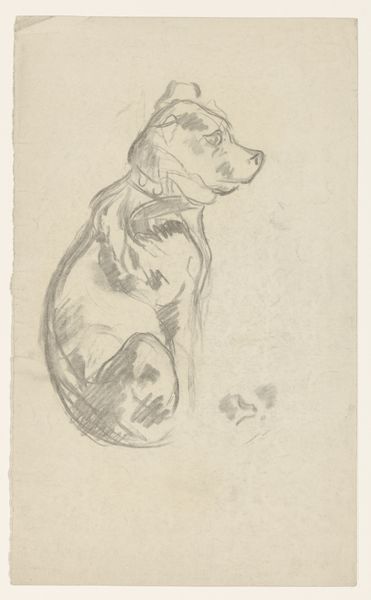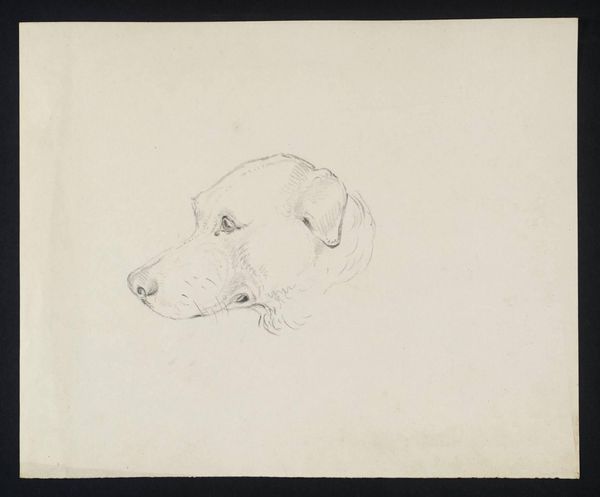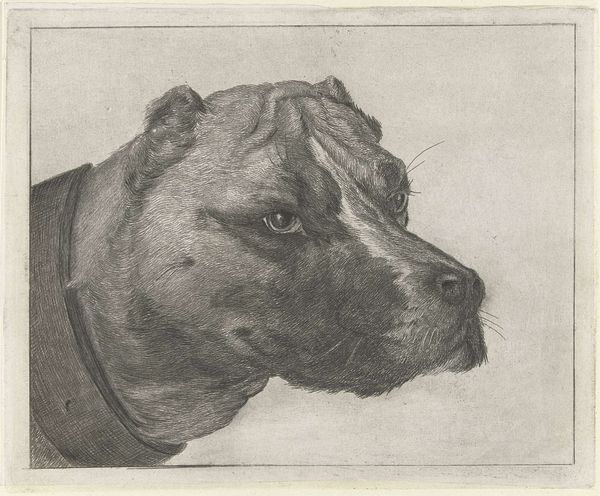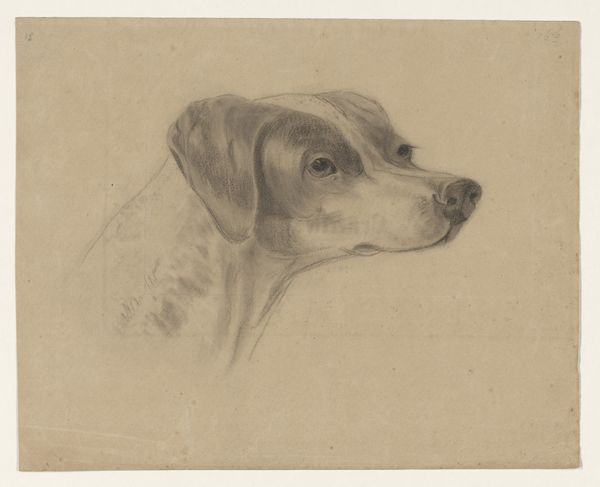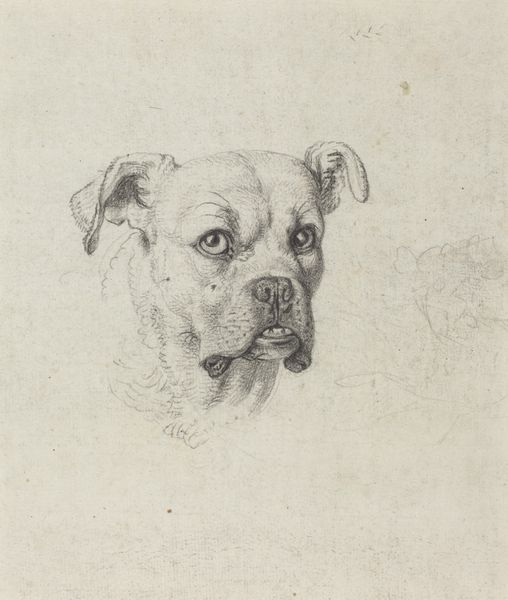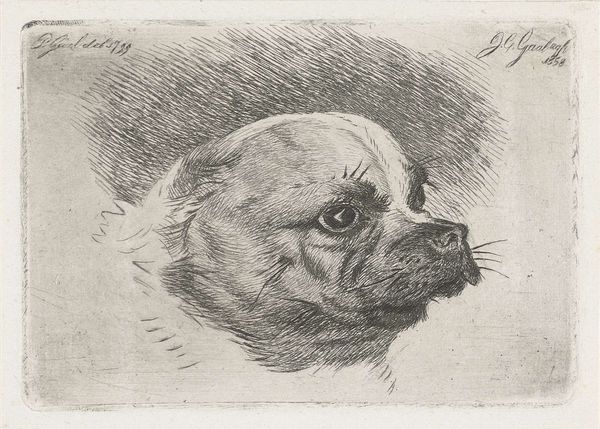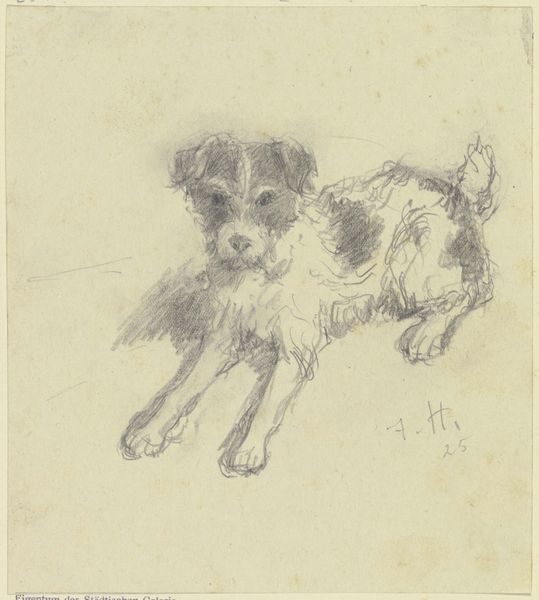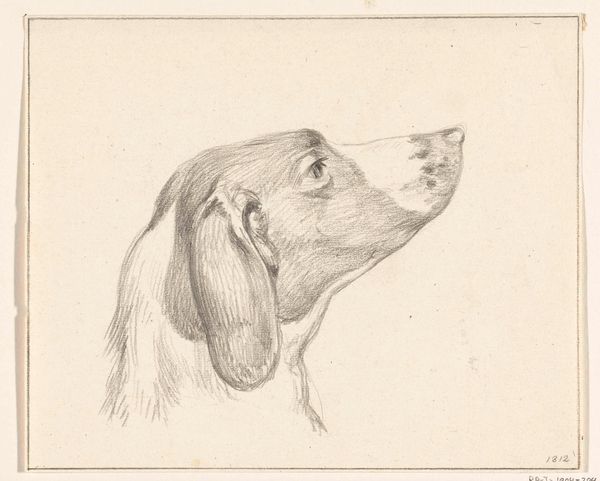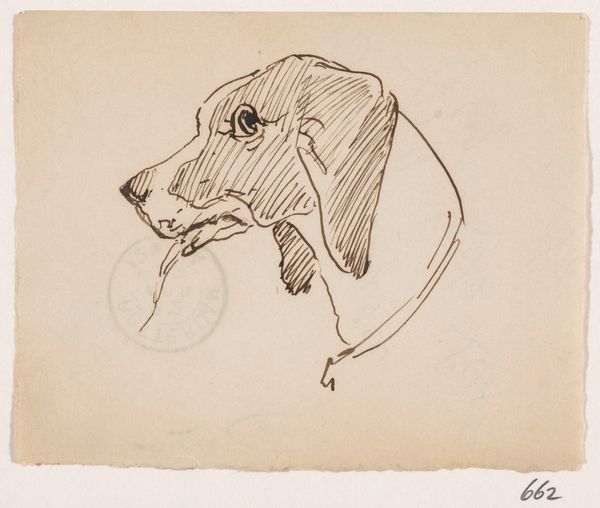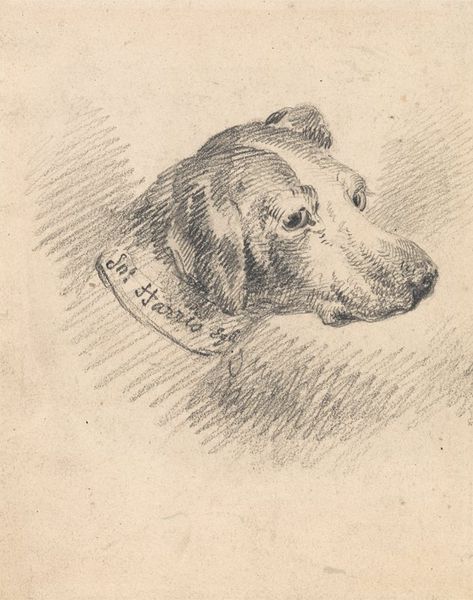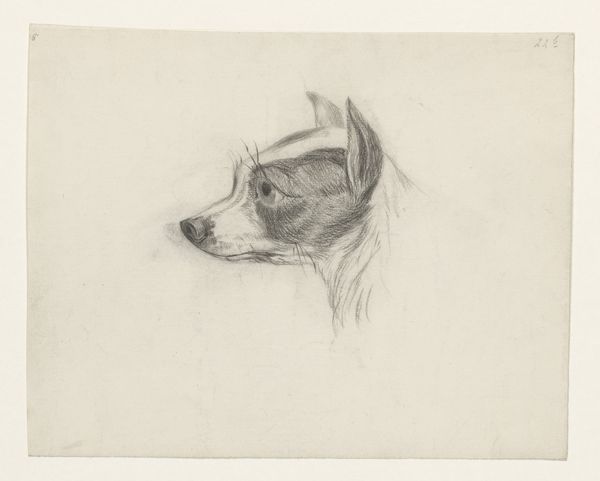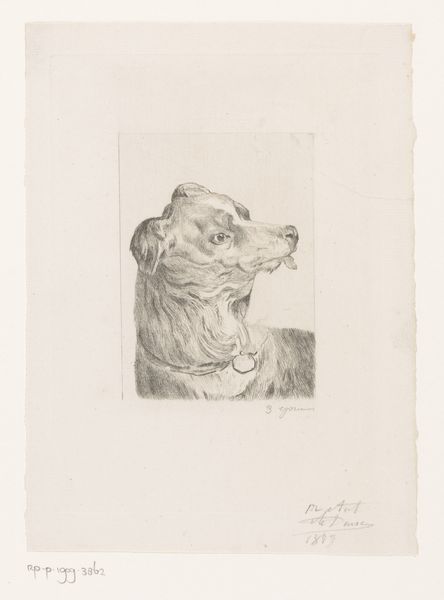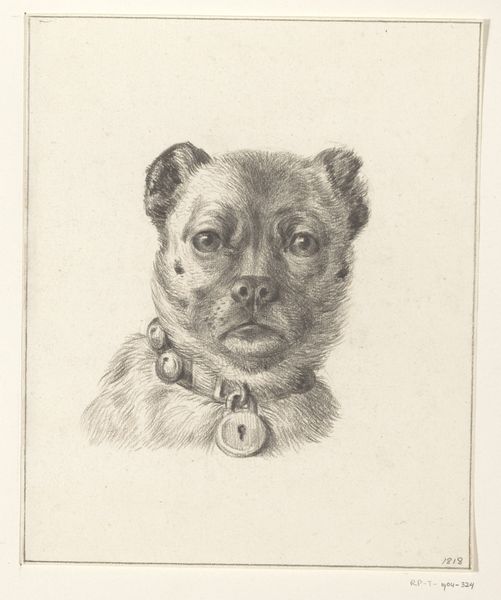
drawing, pencil
#
portrait
#
pencil drawn
#
drawing
#
pencil sketch
#
pencil drawing
#
pencil
#
realism
Dimensions: height 100 mm, width 127 mm
Copyright: Rijks Museum: Open Domain
Curator: Here we have "Hondenkop" by Georges Michel, estimated to be made sometime between 1773 and 1843. The medium appears to be pencil on paper. What are your initial impressions? Editor: There's a tentative quality to it, almost as if the artist is searching for the dog's essence. It has a subdued feel despite the direct gaze. It seems humble, and in scale feels somehow intimate. Curator: Intimate is an interesting word. The piece seems unfinished. The swift lines describe a head and a hint of the shoulders. Consider the economic implications, for instance. A rapid sketch like this would be far less expensive than a fully rendered painting and could appeal to a middle class keen to showcase their affection for their animals within domestic interiors. Editor: I understand your social positioning, but, looking at the confident strokes defining the snout, for example, I don't see it as just a product of commerce. The textural contrast between the rough strokes in the ears and the softer shading around the eyes intrigues me. It is a dynamic tension there. Curator: I suppose you are considering how the formal arrangement embodies character and how it serves to reflect and shape society’s interaction with dogs and their increasing domestic roles. Did portraiture help elevate animals to companion status? Editor: Precisely! But not just elevated status, consideration and empathy. See how the slightly downcast eyes evoke sympathy? Or consider the loose strokes implying the rest of the animal’s body – not there but implied. Is this more honest in conveying their relationship with the dog. Curator: You see an empathy embedded within its materiality. Still, context is crucial. During this period, canine imagery shifted from purely utilitarian depictions of working dogs to sentimental portrayals of pets, marking a significant change in cultural values and highlighting societal changes in how we perceived our place in the natural world. Editor: We agree then; either we're seeing pure emotional response translated into line and form or the burgeoning idea of human animal bond finding visual expression. Either interpretation lends greater depth to something that, at first, may appear just a sketch. Curator: Well put. Analyzing artworks from multiple viewpoints offers viewers an enriched comprehension and experience.
Comments
No comments
Be the first to comment and join the conversation on the ultimate creative platform.
